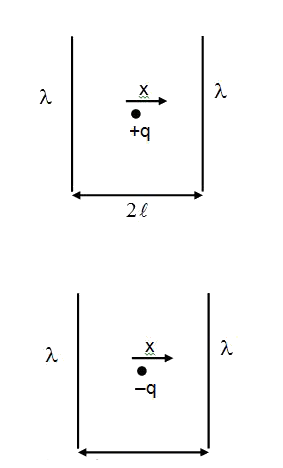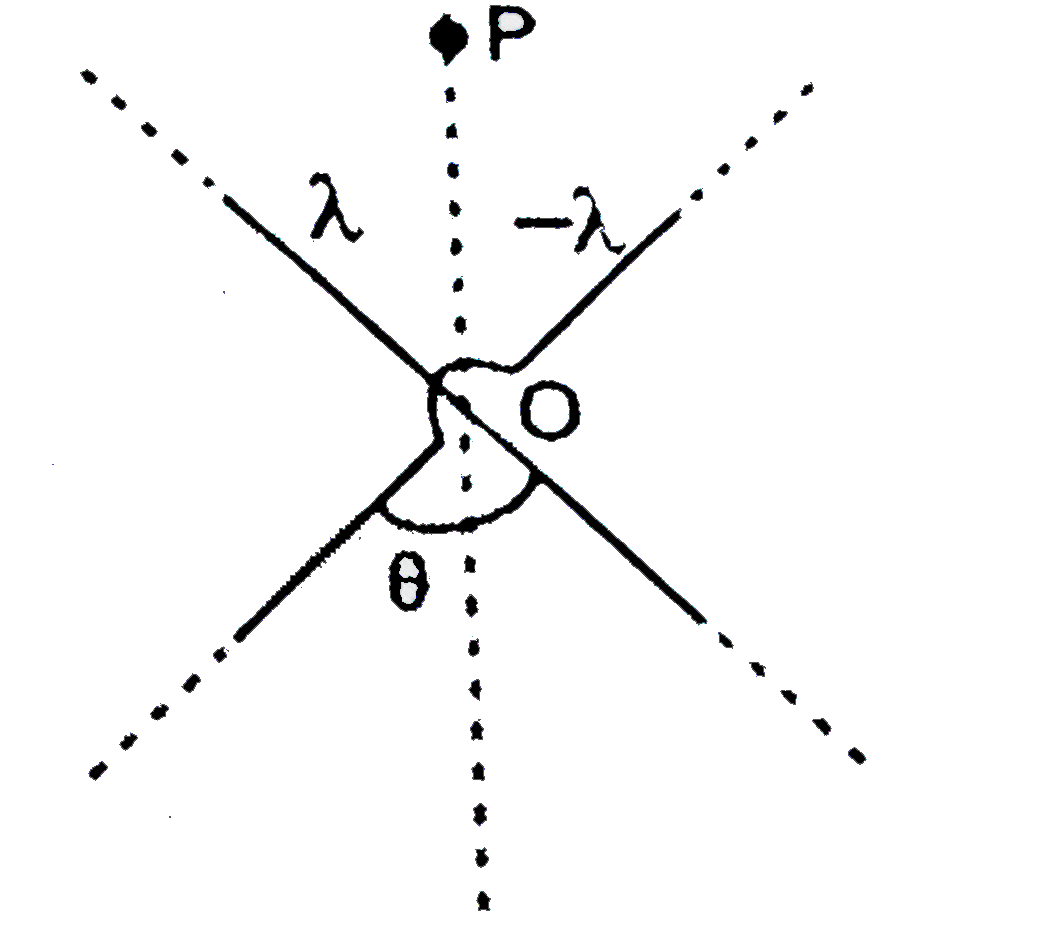The figure below depict two situations in which two infinitely long static line charges of constant positive line charge density λ are kept parallel to each other. In their resulting electric field, point charges q and −q are kept in equilibrium between them. The point charges are confined to move in the x direction only. If they are given a small displacement about their equilibrium positions, then the correct statement(s) is(are)

charges execute simple harmonic motion.
Both charges will continue moving in the direction of their displacement.
Charge +q executes simple harmonic motion while charge –q continues moving in the direction of its displacement.
Charge –q executes simple harmonic motion while charge +q continues moving in the direction of its displacement
The correct Answer is:C

Frest=λq2πε0(l−x)−λq2πε0(l+x)
=λq(2x)2πε0(l2−x2)

⇒Frest≈λqxπε0l2
⇒ It executes SHM.
Frest≈−λq2πε0(l−x)+λq2πε0(l+x)
Frest≈−λqxπε0l2
⇒ Force is towards right hence the particle keeps going towards right.
Similar Questions
Knowledge Check
- Question 1 - Select One
Two infinitely long thin styraight wires having uniform linear charge densities λ and 2λ are arranged parallel to each other at a distance r apart.The intensity of the electric field at a point midway between them is
A2λπε0Bλπε0rCλ2πε0rD3λ2πε0r - Question 2 - Select One
Two charge +q and −q are kept apart.then at any point on the right beisector of line joining the two charges
Athe electric fields strenght is zeroBthe elctric potential is zeroCboth electric potential and electric field strength are zeroDboth electric potential and electric field strength are non zero - Question 3 - Select One
Two point charges +9e and +e are kept 16cm. Apart from each other. Where should a third charge q be placed between them so that the system is in equilibrium state:
A24cm form +9eB12cm from +9eC24cm from +eD12cm from +e
Two positive point charges , each Q , are fixed at separation d. A third charge q is placed in the middle. Describe the equilibrium of the third charge.
View SolutionBetween two infinitely long wires having linear charge densities λ and −λ there are two points A and B shown in the figure. The amount of work done by the electric field moving a point charge q0 from A to B is equal to
 View Solution
View Solution(i) Two infinitely long line charges each of linear charge density λ are placed at an angle θ as shown in figure. Find out electric field intensity at a point P, which is at a distance x from point O along angle bisector of line charges.

(ii) Repeat the above question if the line charge densities are λ and −λ. as shown in figure.
 View Solution
View SolutionThe given diagram shows two infinite line of charges having equal (in magnitude) linear charge density but with opposite sign. The direction of electric field at any point on x-axis for (x>0) is given by the unit vector
 View Solution
View SolutionThe variation of electric field between two charge q1 and q2 along the line joining the charges is plotted against distance from q1 (taking rightward direction of electric field as positive) as shown in the figure. Then the correct statement is
 View Solution
View Solution
